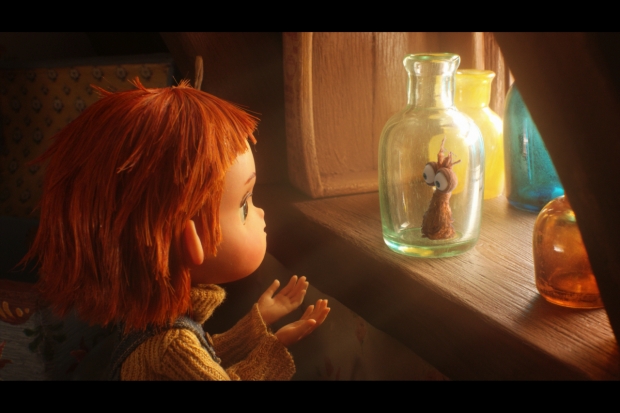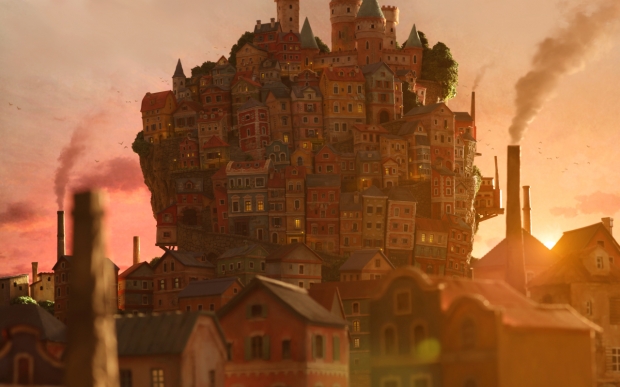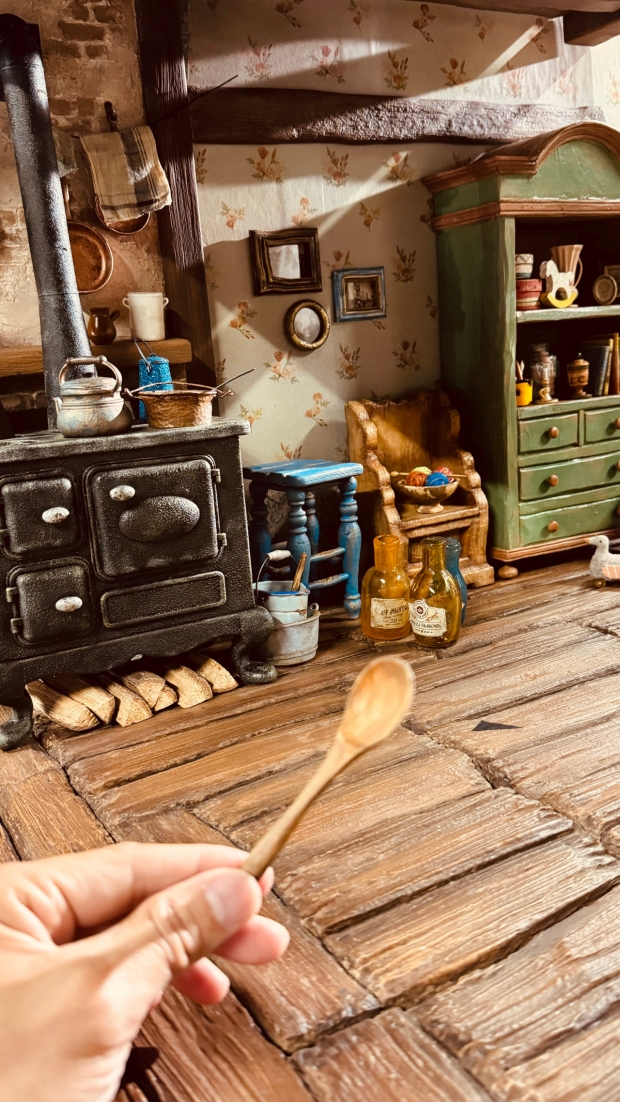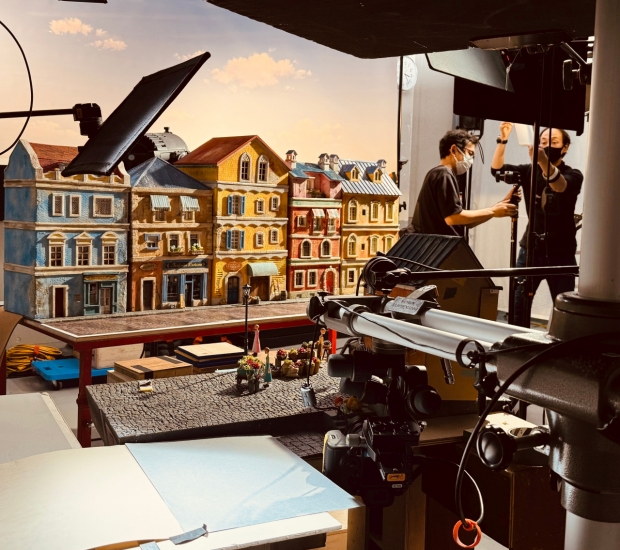The Tonko House co-founder teams with popular Japanese comedian Akihiro Nishino on a compelling new short film that combines the artistry and palpable emotionality of stop-motion animation with a powerful narrative exploring themes of addiction and personal growth.
It’s hard to believe a film that tackles a father’s alcohol addiction as told from the perspective of his child could begin as a comedy pitch.
But that’s exactly how Bottle George began.
“Akihiro Nishino is a pretty popular comedian in Japan, and we met at one film festival or another and got to talking about how the industry of Hollywood is due for a change,” shares Daisuke "Dice" Tsutsumi, former Pixar director and co-founder of Tonko House, best known for its first animated Oscar-nominated short film, The Dam Keeper and ONI: Thunder God’s Tale. “As an indie studio, all of us at Tonko House are always trying to find ways to make unconventional content. So, when [Akihiro] told me about this idea for a film, focused on a character trapped in a bottle, I was immediately interested.”
He continues, “Back then, of course, the concept was very different, involving a miniaturized human man stuck inside a bottle after drinking too much. It was meant to be funny. But, after sitting on the idea for a couple years while we both did other projects, when we came back to it, we decided we’d try to write something more emotional and honest about addiction.”
Making its world premiere this Saturday, April 27 at the San Fransisco International Film Festival, Bottle George is a stop-motion short produced by Chimney Town in collaboration with Tonko House and dwarf studios. The film explores the relationship between a young girl struggling with her fear of her alcoholic father and a small creature trapped inside a bottle. The girl and her father are poor and live with a rather mischievous cat who offers some comic relief in a mostly serious film intent on depicting both the resilience and overwhelming sickness that occurs within a life of addiction.
The film is directed by Tsutsumi and executive produced by Nishino, creator of the "Poupelle of Chimney Town (Entotsu-machi no Poupelle)" picture book and will have its screening at the Marina Theatre. Tickets are available, here.
“Addiction is something that’s really hard to write about,” notes Tsutsumi. “Especially with children in the mix. It's something that's very sensitive and misunderstood. Maybe some people will be upset, but we felt that, if we don't talk about it, this will be something that’s always swept under the rug.”
Tsutsumi and Nishino’s decision to steer the film – almost entirely self-funded by Nishino – away from comedy and into more uncharted, even potentially unfriendly territory of sincerity stemmed from both creatives having personal connections with the subject matter.
“I have personal experience, as a young child and in my 20s, dealing with somebody who I was really close to going through addiction problems,” Tsutsumi reveals. “And it’s a situation where you don't even know you’re in it. You don’t even know you have a problem until you're stuck inside that bottle. It had a big impact in my life, and I always wanted to do a film about it. When [Akihiro] mentioned that he too had similar problems in his life, with his friends, we knew it was time to go deep with this film.”
Though both creatives experienced plenty of heartbreak watching those they loved struggle with alcohol addiction, they also wanted to make sure that Bottle George didn’t villainize the alcoholic father. The film is as much about his struggles as it is about those of his child.
“There’s these misconceptions about it that someone just doesn’t have a strong will, or that they must be a bad person,” shares Tsutsumi. “But it’s not about that. It’s a disease, and it's something that we really need to talk about with feeling and empathy.”
He continues, “And the film is very vulnerable. But it’s also fun and entertaining.”
Though Tsutsumi worked with Dwarf Studios before at the beginning of production for Tonko House’s Netflix series ONI: Thunder God’s Tale, Tsutsumi never got to see that stop-motion dream to fruition as it had become so time-consuming. ONI was eventually made with CG animation to look like stop-motion but, with Bottle George, Tsutsumi didn’t have to compromise.
And it’s a good thing too, because stop-motion’s innate storytelling tangibility was perfect for creating empathy for an addict character who audiences could all too easily detach from emotionally. But in a medium where these models and their animators have a creation-meets-creator-type relationship, where every hair on a character’s head, every strand of their clothing, every movement they make is felt and executed by human hands, compassion comes naturally.
“Stop-motion has always been a dream of mine, because it’s so special,” says Tsutsumi, who notes Bottle George is his studio’s first stop-motion project. “But it’s not without its challenges.”
It might not take long to guess what the biggest challenge of a production titled Bottle George would be but, spoiler alert, it’s stop-motion animating a creature trapped inside a bottle.
“We had to animate George outside of the bottle and then comp him into the bottle in post,” explains Tsutsumi. “Then there are the segments with the alcohol in the bottle, where Goerge is swimming in an ocean of whiskey. All that stuff is really challenging, but the team at Dwarf did an amazing, beautiful job.”
George’s final design was also a bit of a head-scratcher as the story began to morph into something different than its original concept. Though what George exactly is will remain a mystery until viewers see the film for themselves, Tsutsumi hints that the essence of this bottle-bound caterpillar-like character is symbolic and whether he actually exists is up for debate.
“It’s why we think this story is told best as a short film,” notes the director. “If you look at short films and feature films, it’s like poetry versus a novel. Is this child really seeing George? Or is it just the child projecting her feelings, trying to make sense of what’s happening around them? I’d like to let the audience decide that. But whether George is real or not, he represents the reality of addiction, where those going through it don’t actually know for certain what they are dealing with because of all its complexities.”
This may be the first stop-motion project for Tonko House, as well as their first time tackling a story about addiction, but Bottle George isn’t so different from previous narratives the studio has put out into the world.
Three major Tonko House projects –The Dam Keeper, Moom, and ONI: Thunder God’s Tale –have shared themes of a young, isolated individual finding their own voice and sanctuary despite their home being in a place where they are repeatedly beaten down.
“At Tonko House, we always talk about how our stories should come from honest places and that feeling of not belonging, being an outsider, is one I’m very familiar with,” shares Tsutsumi. “When a story is personal to me, it makes me want to protect it and protect the emotions behind it. It’s tough to always be so honest and raw in what we create, but I’ve found that helps these stories to thrive.
Another motif of Tonko House projects is not spelling out, in black-and-white terms, cookie-cutter answers to the problems posed in their stories. In the case of Bottle George, there isn’t certain closure and Tsutsumi knows this may elicit mixed reactions from audiences. But it’s honest. And that’s the point. It’s not about giving answers. It’s about starting a conversation.
“In this film, there are a lot of things that are unexplained and unresolved, even with the cat, and audiences might be wondering, ‘What the hell?’,” admits Tsutsumi. “It’s not a happily-ever-after kind of ending. But there is hope. And, in a way, this story is also about letting go of control and holding onto hope. This family may not be perfect, and they may have many challenges ahead, but they have each other and they have hope.”












